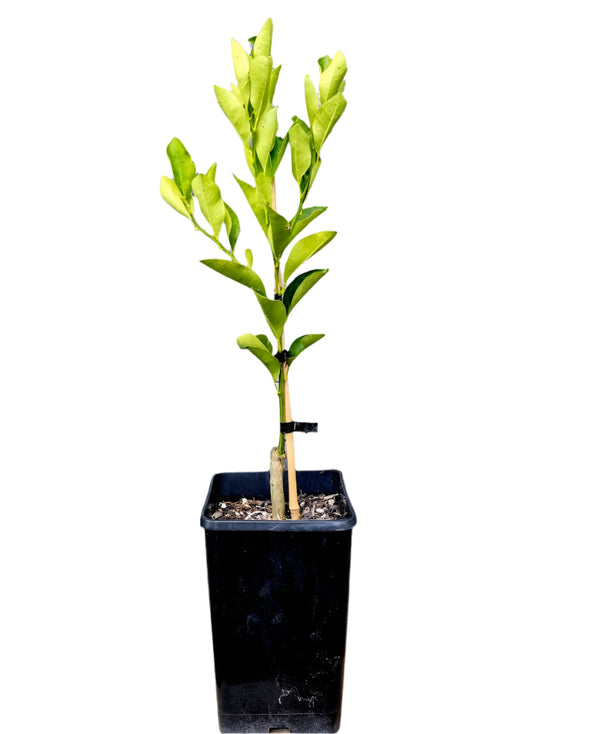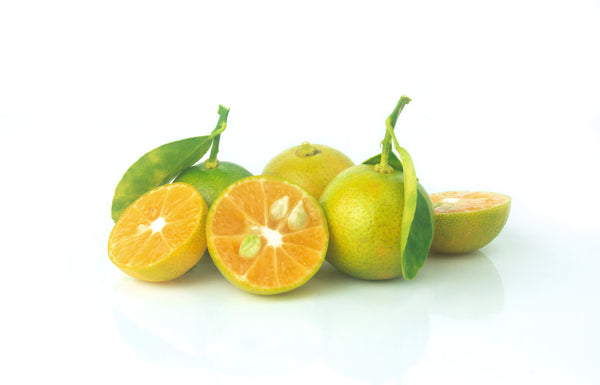
Calamansi Tree (Calamondin Tree)
Tax included
Shipping calculated at checkout
Please note: OurEstablished Range, Medium Standard Range (14L pot), andTall Standard Range trees are available for pickup only, as their size exceeds standard courier limits.
The Calamansi tree (Calamondin) is a small, evergreen tree that produces small, round fruits resembling miniature oranges. The fruit of the calamansi tree is valued for its tart flavour and aromatic qualities, making it a popular ingredient in culinary and medicinal applications. The peel is thin and smooth, while the flesh is juicy and acidic, with a flavour like a mix of sour lime and tangerine.
Calamansi is used in Filipino and Southeast Asian cuisine. The juice can be squeezed directly into food, made into a marinade for meats, or mixed with water and sugar to create a refreshing drink. The zest is also used to add intense citrus aroma. Calamansi has various household and medicinal uses and can be made into soaps, air fresheners and skin care products.
The calamansi tree thrives in warm climates and is easy to grow planted in the garden or in a container. Its fruits ripen year-round, providing a constant supply of fruit. Calamansi trees are a versatile and valuable addition to any garden, offering both ornamental beauty and fruit.
|
Names |
Calamansi, Calamondin, Philippine lime, Philippine lemon, Citrus x microcarpa |
|
Origin |
Southeast Asia |
|
Mature Size |
1.8 to 3m |
|
Foliage |
The calamansi tree features glossy green leaves with a distinct citrus fragrance when crushed. Fragrant white flowers bloom on the tree, adding to its ornamental appeal. |
|
Soil |
Well-drained, fertile soil is ideal for calamansi trees. They prefer slightly acidic to neutral soil pH levels. Keep the soil moist but not waterlogged. Water regularly, especially during hot, dry periods. |
|
Position |
Thrive in warm, tropical climates. Sensitive to frost. In cooler climates they can be grown in containers and brought indoors during colder months. Provide full to partial sun for optimal growth and fruit production. |
|
Flavour |
Tangy, refreshing, sour. |
|
Fruiting |
Virtually year round. |
|
Fruit Uses |
Calamansi fruits are widely used in Southeast Asian cuisine, particularly Filipino, to add a tangy flavour to dishes, sauces, marinades, and beverages. Juice can be enjoyed on its own or mixed with water, soda, or other juices. In traditional medicine, calamansi is believed to have immune-boosting properties due to its high vitamin C content. It is also used topically for its astringent and antiseptic properties. |





